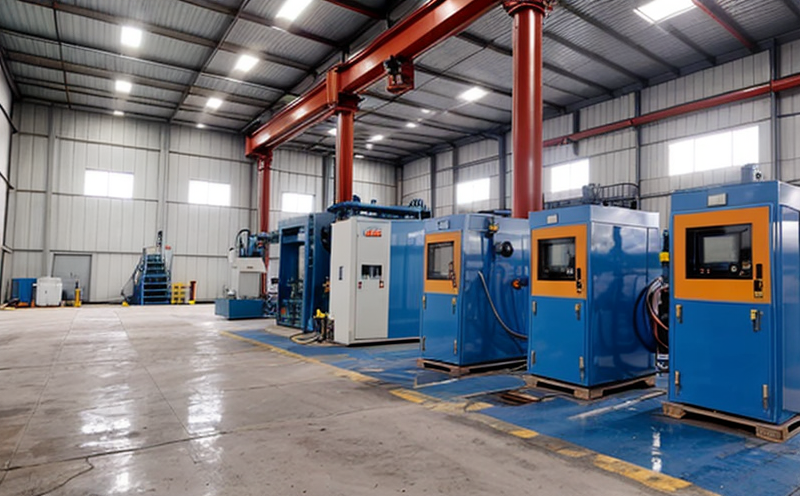EN 14157 Abrasion Resistance of Stone and Mineral Tiles Testing
The EN 14157 standard specifies a method for determining the resistance to abrasion of stone and mineral tiles, which is crucial in various sectors such as construction, architecture, and industrial applications. This test evaluates how well materials withstand wear and tear under controlled conditions, ensuring durability and performance over time.
The abrasion resistance testing simulates real-world use by subjecting specimens to mechanical friction using an abrasive wheel. The primary goal is to quantify the mass loss of the specimen after a specified number of cycles. This type of testing is particularly important for industrial minerals and stone tiles as they are often exposed to heavy foot traffic, weather conditions, or other environmental stressors.
To perform this test accurately, specimens must be prepared according to EN 14632 guidelines. This includes cutting the materials into standard dimensions (typically 50 mm x 50 mm) and ensuring they are uniformly dry before testing. The abrasion tester used follows the specifications outlined in ISO 813. During the test, the abrasive wheel rotates at a constant speed while pressing against the specimen with defined pressure.
The results of the test are reported as grams lost per cycle, which allows for direct comparison between different samples or materials. Compliance with this standard ensures that products meet the required abrasion resistance levels specified by the client or industry regulations. For example, in industrial settings where tiles need to withstand harsh conditions, meeting these standards can prevent costly maintenance and replacement.
In addition to its role in quality assurance, EN 14157 testing also supports research and development efforts aimed at improving material properties. By understanding how various factors affect abrasion resistance (such as surface texture or composition), manufacturers can innovate new products that better suit demanding environments.
- Preparation: Ensuring specimens are cut to size and dried according to EN 14632.
- Instrumentation: Utilizing an abrasion tester adhering to the specifications in ISO 813.
- Data Reporting: Providing results as grams lost per cycle, facilitating comparison and compliance verification.
The importance of this test cannot be overstated when it comes to selecting appropriate materials for industrial applications. It helps ensure that the chosen tiles will stand up to rigorous usage without compromising safety or aesthetics. By adhering to EN 14157, laboratories like ours contribute significantly to maintaining high standards across multiple industries.
For those responsible for quality management, compliance officers, and R&D engineers working with industrial minerals and stone tiles, understanding the nuances of this test can lead to better decision-making processes. Properly conducted abrasion resistance tests not only enhance product performance but also promote sustainable practices by prolonging the life cycle of materials.
Scope and Methodology
The scope of EN 14157 covers the determination of the resistance to abrasion of stone and mineral tiles. The methodology involves subjecting specimens to mechanical friction using an abrasive wheel under controlled conditions. This process simulates real-world scenarios where materials may be exposed to abrasive forces, such as foot traffic or environmental elements.
The test is conducted according to the procedures specified in ISO 813. Specimens are prepared according to EN 14632, which ensures uniformity and consistency across all samples being tested. The abrasion tester used must comply with these standards, ensuring accurate measurement of the mass lost by each specimen.
The specimens undergo a series of cycles during which they are pressed against an abrasive wheel rotating at a constant speed. After reaching the specified number of cycles, the mass loss is measured and recorded. This allows for precise quantification of abrasion resistance, providing valuable data for both quality assurance and research purposes.
- Specimen Preparation: Cutting to size per EN 14632.
- Abrasion Wheel: Rotating at a constant speed, pressing against the specimen.
- Cycles: Specified number of cycles for consistent testing conditions.
The results of this test are reported as grams lost per cycle. This standardized approach ensures comparability between different samples or materials, making it easier to assess performance and compliance with specified standards. For industries relying heavily on durable materials, such as construction and architecture, meeting these requirements is essential for maintaining high-quality products.
By following the rigorous procedures outlined in EN 14157, laboratories can provide accurate and reliable abrasion resistance data that supports informed decisions about material selection. This contributes to enhancing product quality while promoting sustainability through extended material lifecycles.
Benefits
- Improved Product Quality: Identifies potential issues early in development.
- Regulatory Compliance: Ensures adherence to industry regulations and standards.
- Cost Savings: Reduced maintenance and replacement costs for end-users.
- Safety Enhancement: Minimizes risks associated with unstable or slippery surfaces.
In summary, EN 14157 testing offers numerous benefits across the supply chain, from manufacturers to end-users. It fosters innovation while ensuring consistent quality and performance of industrial minerals and stone tiles.
Environmental and Sustainability Contributions
- Promoting Durability: Materials that pass EN 14157 tests tend to have longer lifespans, reducing waste generation and resource consumption.
- Eco-Friendly Maintenance: Reduced maintenance requirements lead to lower energy use and emissions associated with frequent replacements.
By adhering to these standards, industries contribute positively to environmental sustainability. The reduced need for frequent product replacement translates into less waste in landfills and decreased demand on natural resources. Furthermore, the enhanced durability of materials supports greener practices by promoting a circular economy where products remain useful for extended periods.
For companies committed to sustainability, EN 14157 testing offers an opportunity not only to meet regulatory requirements but also to demonstrate their commitment to environmental responsibility. This aligns with broader corporate strategies focused on reducing carbon footprints and fostering eco-friendly operations.





